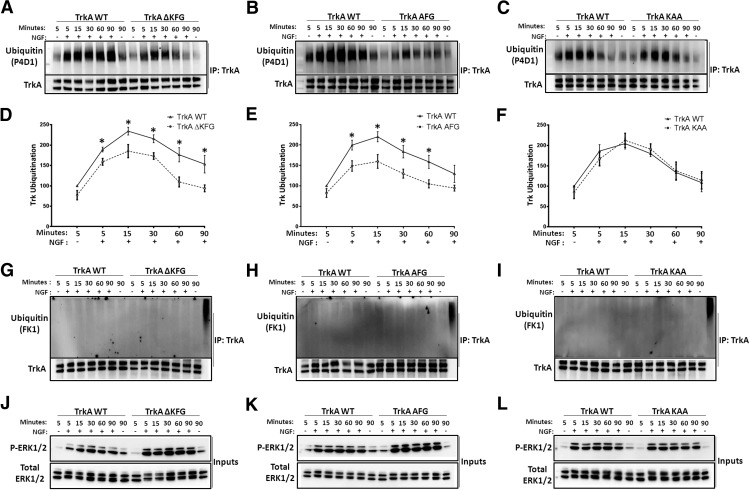Figure 3.
Lys450 in the KFG motif is important for the ubiquitination of TrkA receptors in response to NGF. A–C, HEK293T cell lines stably expressing a single copy of WT, KFG deleted (ΔKFG), AFG (single lysine to alanine mutation), or KAA (phenylalanine and glycine converted to two alanines) mutated TrkA were generated as described in Materials and Methods. Cells treated for 5 min with 100 ng/ml NGF and lysed at time points ranging from 5 to 90 min were immunoprecipitated (IP) and blotted with an anti pan-TrkA antibody as a control (bottom) or the anti-ubiquitin antibody P4D1 (top). D–F, Graphs showing the quantification of ubiquitination levels relative to total TrkA in A–C were performed by normalizing the ubiquitin band intensity values to corresponding TrkA bands relative to TrkA WT samples without NGF. The values are given as mean ± SEM and blots are representative of at least three independent experiments; *p < 0.05 (t test). G–I, Blots as in A–C were probed with the FK1 antibody that detects poly-ubiquitinated but not mono-ubiquitinated proteins. Previously characterized poly-ubiquitinated mouse embryo fibroblasts transfected with an HA-ubiquitin expression vector and treated with MG132 were used as controls to exhibit the specificity of the antibody. J–L, Input lysates were blotted with anti-phospho-Erk (as a control of NGF activity) and Erk (as a loading control) antibodies.

